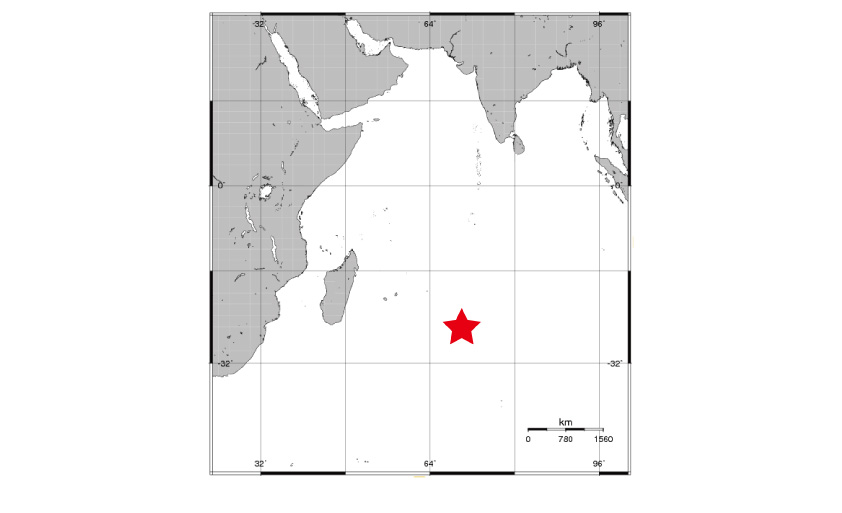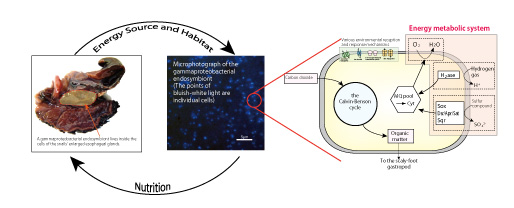Complete genome sequencing of the gammaproteobacterial endosymbiont of the scaly-foot gastropod (aka “kurosuke”), an armored snail that lives in deep-sea vents
Research Press Release | September 13, 2013
-
 A scaly-foot gastropod that inhabits the deep-sea vents of the Indian Ocean (Japanese name: Urokofunetamagai) The sides of its foot are covered with iron sulfide scales, which are thought to serve as a defense against predators. The maximum shell size is 4.5 cm.
A scaly-foot gastropod that inhabits the deep-sea vents of the Indian Ocean (Japanese name: Urokofunetamagai) The sides of its foot are covered with iron sulfide scales, which are thought to serve as a defense against predators. The maximum shell size is 4.5 cm. -
 The Kairei Field, located in the Indian Ocean's Central Indian Ridge (★).
The Kairei Field, located in the Indian Ocean's Central Indian Ridge (★). -
 Fig. 2 The relationship between the scaly-foot gastropod and the gammaproteobacterial endosymbiont (Left: Cross-section diagram of a scaly-foot gastropod)
Fig. 2 The relationship between the scaly-foot gastropod and the gammaproteobacterial endosymbiont (Left: Cross-section diagram of a scaly-foot gastropod)
|
Press Release |
||
|---|---|---|
| Key Points | – The successful analysis of the complete genome sequence of the gammaproteobacterial endosymbiont that provides life-support for scaly-foot gastropods.
– The identification of the principal metabolic pathways and unique evolutionary process of the endosymbiont via genome analysis and incubation experiments. – The determination of the endosymbiont’s mode of transmission from a genetic comparison of individual gastropods collected from a single colony. – An understanding of the scaly-foot gastropod’s sensitive environmental response using the same methods as human blood tests. |
|
| Overview | In addition to the complete genome sequencing of the gammaproteobacterial endosymbiont of the scaly-foot gastropod, a unique snail with mineralized scales, and the comprehensive identification of its metabolic pathways, the endosymbiont’s mode of transmission was determined.
In addition, an understanding was gained of the scaly-foot gastropod’s sensitive environmental reception and response. This study is the first to clarify at the genetic level the survival tactics that the scaly-foot gastropod and gammaproteobacterial endosymbiont have evolved in order to survive in deep-sea vents. It is expected to serve as a foundation for further advances in the study of the scaly-foot gastropod, a snail about which much still remains unknown. |
|
| Inquiries |
Satoshi Nakagawa, Associate Professor, Faculty of Fisheries Sciences, Hokkaido University TEL& FAX: +81-11-138-40-5570 e-mail: nakagawa@fish.hokudai.ac.jp |
|
| Japanese Link | http://www.hokudai.ac.jp/news/130808_pr_fish.pdf | |
| Publications | The ISME Journal: the Multidisciplinary Journal of Microbial Ecology, (8.8.2013) | |
